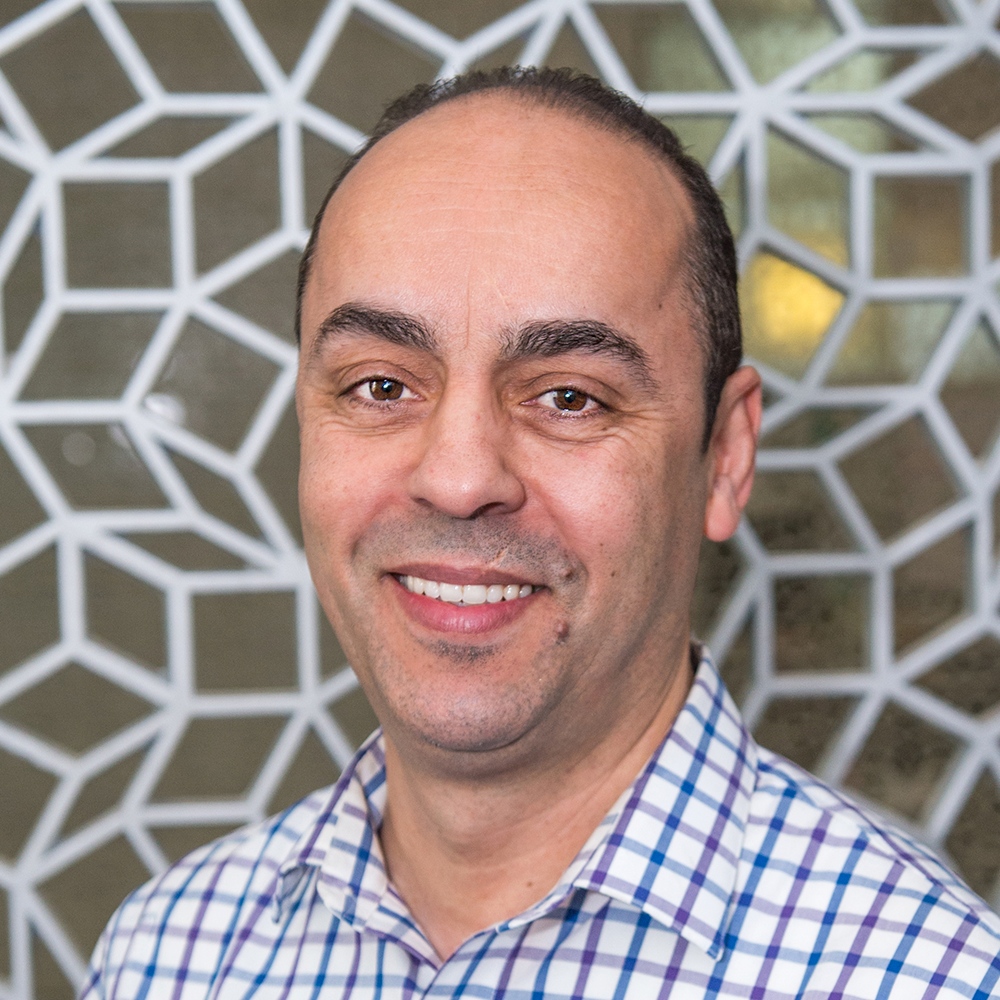
Dr. Mohamed Aittaleb
Research Scientist
Dr. Mohamed Aittaleb
Research Scientist
Educational Qualifications
PhD in Biochemistry
Entity
College of Health and Life Sciences
Biography
Dr. Aittaleb received his PhD in Biochemistry from the University of Liege in Belgium. His dissertation was on “molecular and structural adaptations to low temperatures of psychrophilic enzymes”.
As postdoctoral fellow at Florida State University’s Institute of Molecular Biophysics, he solved the crystal structure of tRNA methylation complex and demonstrated how snoRNA assemble into snoRNP to guide specific pre-tRNA methylation.
From 2004 to 2015, Dr. Aittaleb held different positions at the University of Michigan. As Howard Hughes Medical Institute Research Associate, he applied the biomolecular fluorescent complementation (BiFC) approach to investigate histone ubiquitylation and the role of poly-glutamine ataxin-3 in neurodegenerative Ataxia disease. Then, he worked as Senior Research Scientist at the Life Sciences Institute and Department of Pharmacology, where he studied the structure and spatiotemporal dynamics of G-protein regulated RhoGEFs. He then worked, as Research Investigator at Department of Molecular, Cellular and Developmental Biology, on the regulation and trafficking of postsynaptic scaffold proteins at the neuromuscular junction.
In 2015, Dr. Aittaleb moved to University of Cincinnati’s Vontz Institute and Brain Tumor Center as Senior Scientist. He was investigating Drug resistance to EGFR therapy and survival pathways of circulating tumor cells (CTCs) in the blood of glioblastoma metastatic patients.
PhD in Biochemistry
University of Liege, Liege, Belgium.
2000
Research Scientist
College of Health and Life Sciences - Hamad Bin Khalifa University
2018 - Present
Sr. Scientist
The Vontz Institute and Brain Tumor Center, Division of Hematology-Oncology, University of Cincinnati.
2015 - 2017
Research Investigator
Department of Molecular, Cellular, and developmental Biology, University of Michigan.
2011 - 2015
Sr. Postdoc fellow
Life Sciences and department of Pharmacology, University of Michigan.
2006 - 2011
HHMI Research Associate
HHMI and department of Biological Chemistry, University of Michigan.
2004 - 2006
Postdoc fellow
Kasha Laboratory and Institute of Molecular Biophysics, Florida State University
2000 - 2004
“Genetic Mutations Associated with Lung Cancer Metastasis to the Brain”. Mutagenesis 2018 April 13; 33(2): 137-145
“Spatial distribution and molecular dynamics of dystrophin glycoprotein components at the neuromuscular junctions in vivo”. J. Cell Sc. 2017 March 15; 130(10): 1752-59
“Failure of lysosome clustering and positioning in the juxtanuclear region in cells deficient in rapsyn”. J. Cell. Sci. 2015 Oct 15; 128(20):3744-56.
“A role for the CaM-kinase II related anchoring protein alpha-Kap in maintaining the stability of Nicotinic Acetylcholine Receptor” J. Neurosci. 2012 Apr 11; 32 (15): 5177-85
“Constitutive Plasma Membrane Association of p63RhoGEF is mediated by palmitoylation and required for basal activity in cells” J. Biol. Chem. 2011 Sep 30; 286(39): 34448-56
“Structure and Function of Heterotrimeric G protein-regulated Rho Guanine Nucleotide Exchange Factors” Mol. Pharmacol. 2010 Feb;77(2):111-25. (Figure 1 from this article has been selected for the cover of this issue).
“A Conserved Hydrophobic Surface of the LARG Pleckstrin Homology Domain is Critical for RhoA Activation in Cells”. Cell Signal. 2009 Nov; 21(11):1569-78. (This article has been selected by Faculty of 1000).
“Structural and Thermodynamic Evidence for a Stabilizing Role of Nop5p in S-adenosyl-L-methionine Binding to Fibrillarin” J. Biol. Chem. 2004 Oct 1; 79(40): 41822-9
“Functional Requirement for Symmetric Assembly of Archaeal Box C/D Small Ribonucleoprotein Particles” J. Mol. Biol. 2003 Oct 17; 333(2): 295-306
“Structure and Function of Archaeal Box C/D sRNP Core Proteins”. Nat. Struct. Biol. 2003 Apr; 0(4):256-63 (This article has been previewed in Nat. Struct. Biol. 2003 Apr; 10(4): 237-9)
- Recovery Act supplemental NIH grant in collaboration with Dr. John Tesmer at University of Michigan and Dr. Bary Willardson at Brigham Young University. Ann Arbor, MI, USA.
- University of Liege doctoral training fellowship, Liege, Belgium.
- Moroccan Education Ministry fellowship for graduate studies abroad. Liege, Belgium
